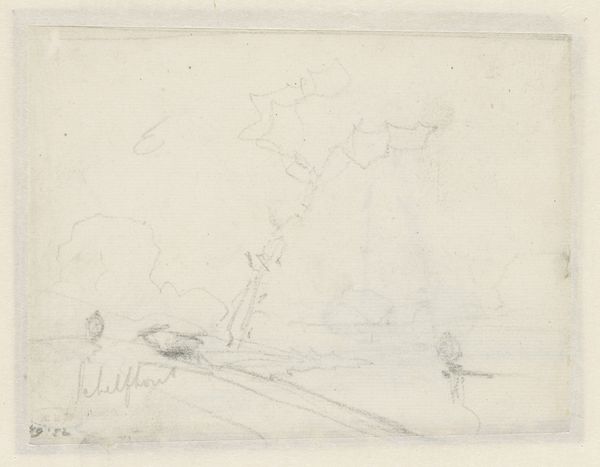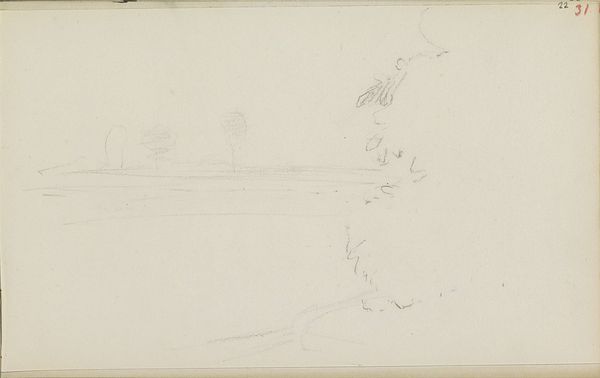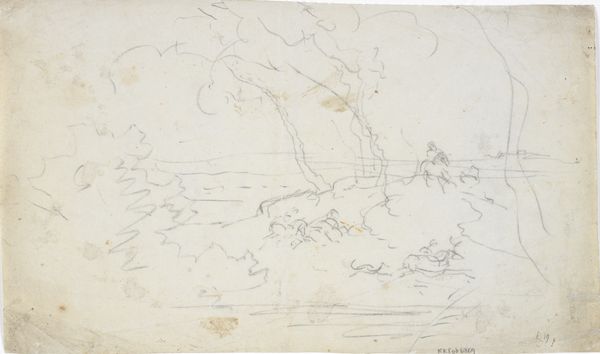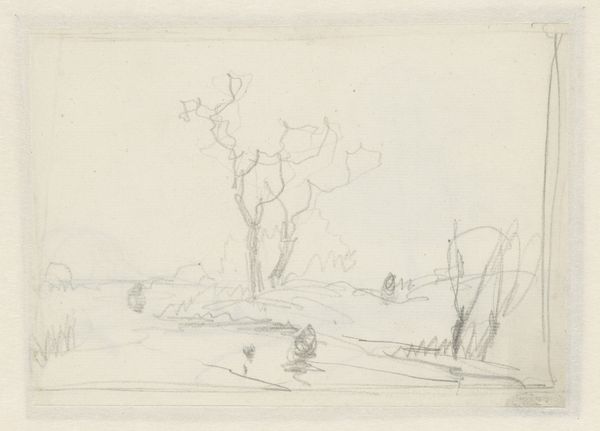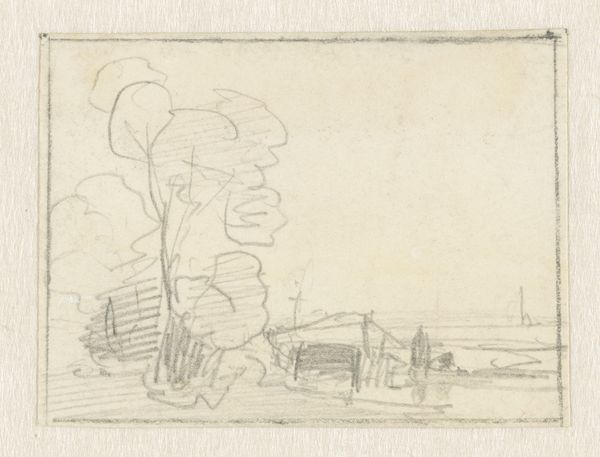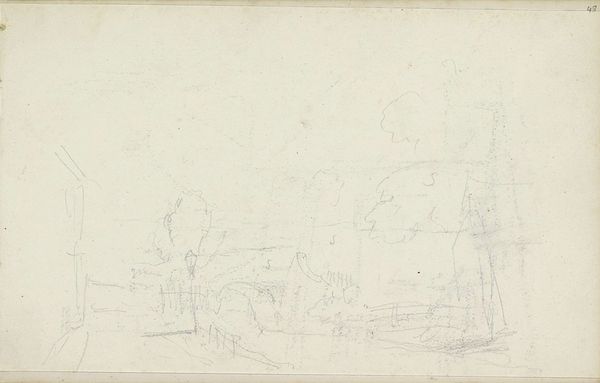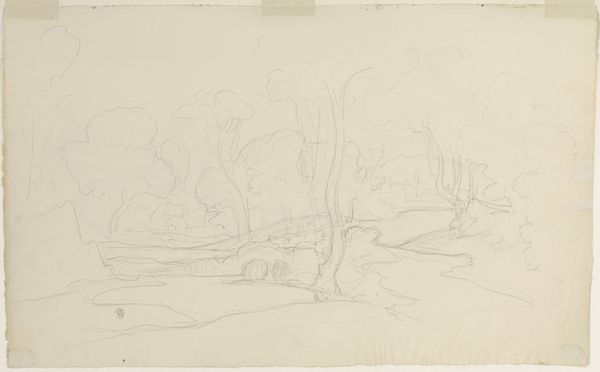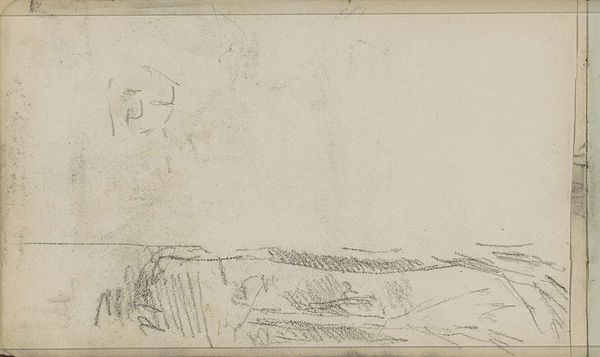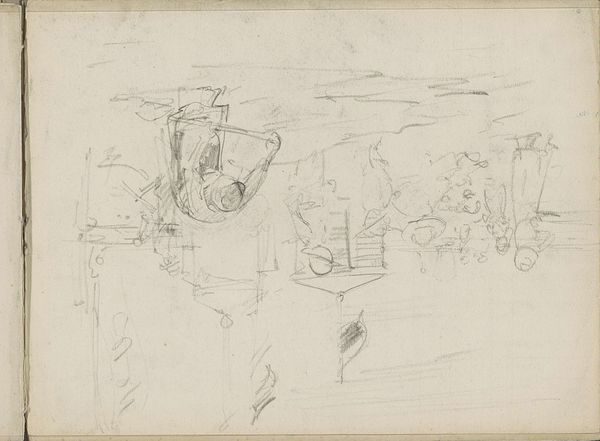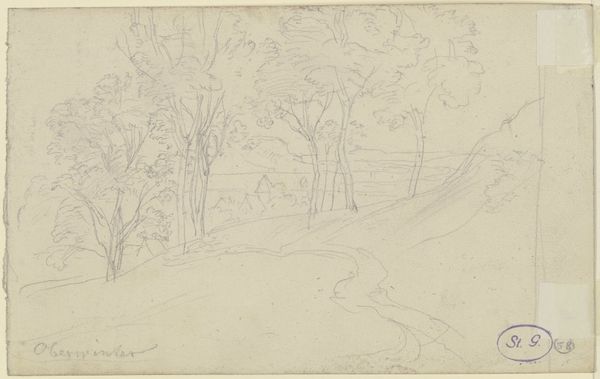
drawing, pencil
#
drawing
#
landscape
#
pencil
#
realism
Dimensions: 188 mm (height) x 109 mm (width) (bladmaal)
Curator: We are looking at P.C. Skovgaard’s 1870 pencil drawing, "Skovsø og træer," which translates to "Lake Forest and Trees." It's currently held at the SMK, the National Gallery of Denmark. Editor: My first impression is…delicate. There's such a hushed quality to the lightness of the pencil strokes. It’s almost like catching a memory fading at the edges. Curator: Absolutely, and the "lake" seems to symbolize something beyond just a body of water. Skovgaard's frequent use of national romantic landscapes connects with the symbols of collective identity in the mid-19th century. Editor: Interesting. I am struck by the obvious simplicity of it all, just pencil on paper. Given its time period, did he produce the drawing ‘in situ’? I imagine the wind making things rather tricky. What sort of paper was he using? Curator: Probably, as drawing in "plein air" became more and more of a habit for landscape painters. The rapid advances in industrial manufacturing enabled things like pre-primed canvases and more portable drawing supplies. Artists could represent nature first-hand with less effort. It's difficult to say exactly what sort of paper this drawing is on without a physical examination. However, given its texture and relative thinness, it was probably a relatively low-cost paper with rag content. Editor: Knowing something about that period, paper marbling was often a huge thing. I'm wondering about the source, manufacture and availability of paper materials in Skovgaard's specific location in rural Denmark. Curator: True, paper provides insights into material constraints of 19th-century Denmark. But consider, also, that these "sketches" are images representing larger cultural concepts; forests and water traditionally mirror introspection. Editor: And now, of course, these fragile drawings have come to represent…Denmark, which perhaps says more about our relationship to cultural heritage than about art. Curator: Yes, precisely! It is humbling to reflect how ephemeral materials come to symbolize lasting values and narratives.
Comments
No comments
Be the first to comment and join the conversation on the ultimate creative platform.
